Christoph Hess was the coaching and training co-ordinator German Equestrian Federation education unit in Warendorf for many years. Christoph is also an international FEI judge. He was always generous in sharing his time and knowledge – and still is in his ‘retirement’ as he is still very active in many roles. Back in 2004, Christoph provided the following simple explanation of that crucial element of the German training scale – losgelassenheit. The photos are selected from one of the many Seminars Christoph conducted at the Bundeschampionat.
‘Losgelassenheit’ means suppleness combined with looseness and the complete absence of any tension. It is the prerequisite for any advancement in training. Together with regularity, it is the primary goal of the initial, familiarising, phase.
Regularity in the gaits can only be correct when the movement goes through a swinging back. The horse’s muscles must work in an unconstrained, free-and-easy manner.
Dorothee Schneider demonstrates in these pix
Visible and internal signs of ‘Losgelassenheit’
– A contented expression (eyes and ears)
– An evenly swinging back
– A light champing of the bit with a closed mouth
– A tail carried and swinging like a pendulum with the movement
– A purring rhythmic ‘blowing’ which is a sign that the horse is mentally relaxed.
Why should a horse be supple?
1. For physical reasons
Suppleness is comparable to any athlete’s warm up. The purpose is to warm up the muscles and increase the fluid supply to the joints so that the body can react elastically, rapidly and efficiently.
2. For psychological reasons
The horse should be contented and quiet, but not dull or tired. Over enthusiasm and a desire to go forward, are completely normal, but they can be tempered by an appropriate period of suppleness. At the end of the suppleness phase, the rider should be able to sit comfortably and initiate the driving aids.
Suppleness exercises under Saddle
What matters is selecting the appropriate kind of exercise, the right sequence and duration according to the level of the horse and rider.
– Medium walk on a loose rein
– Medium walk on a loose rein with control over the poll
– Working trot with the horse working through his whole body
– Rising trot to relieve the back, make breathing easier and to supple the rider.
– Trot-walk transitions to refine the aids
– Working canter, already paying attention to straightness. (possibly in half seat)
– Increased work on curved lines
– Frequent changes of direction
– Frequent canter- trot transitions
– Serpentines – single loop on the long side / three loops, width of the arena
– Turns on the forehand for the co-ordination of the aids
– Leg yielding – away form the track and toward the track / away from the inside or outside leg along the wall / along the open side of the circle
– Lengthening the strides at the trot and canter – to develop or maintain the desire to go forward / to activate the haunches
– Frequent ‘chewing the reins out of the hands’ to encourage yielding at the poll and test ‘Losgelassenheit’
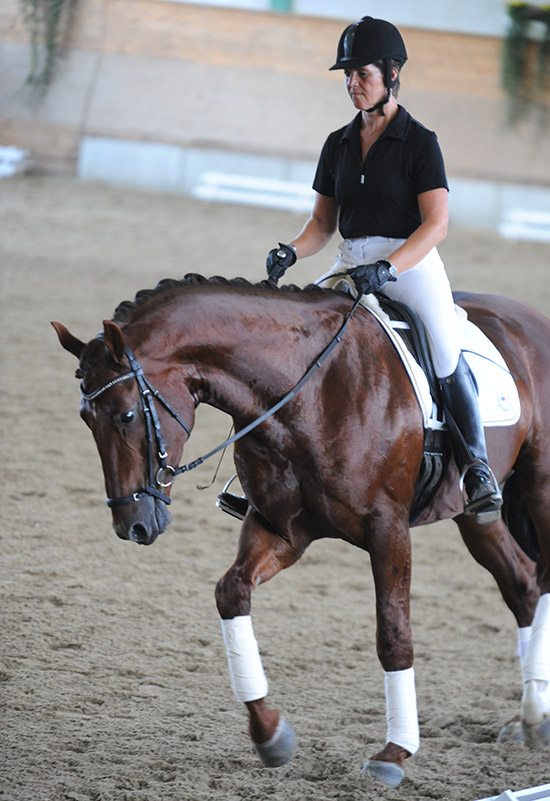
Verification of ‘Losgelassenheit’
Giving the Reins
Chewing the reins out of the hands
A horse which is supple will be:
– quiet but not sluggish
– active but not hurried
As a rule, correct suppleness and the establishment of ‘Losgelassenheit’ will make the nervous horses quieter and the lazy horses more active.
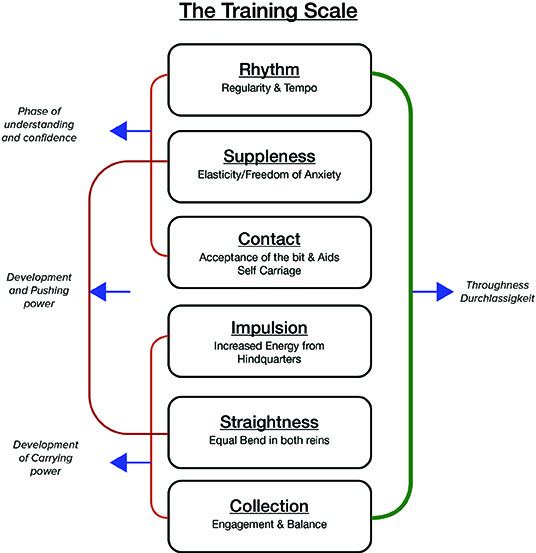
This first appeared in the December 2004 article of THM.
Want to breed to a stallion like these? Just two of the many available in Australia from International Horse Breeders but check out the website, there’s a great range of new stars as well: www.ihb.com.au
Totilas
Vitalis




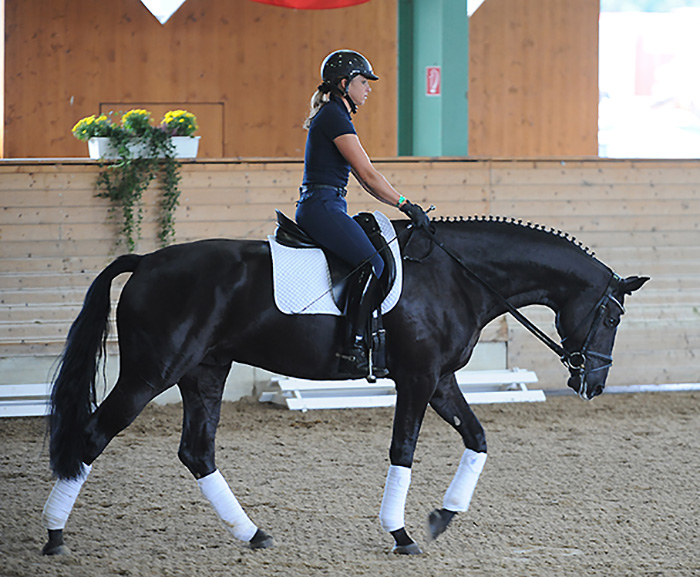
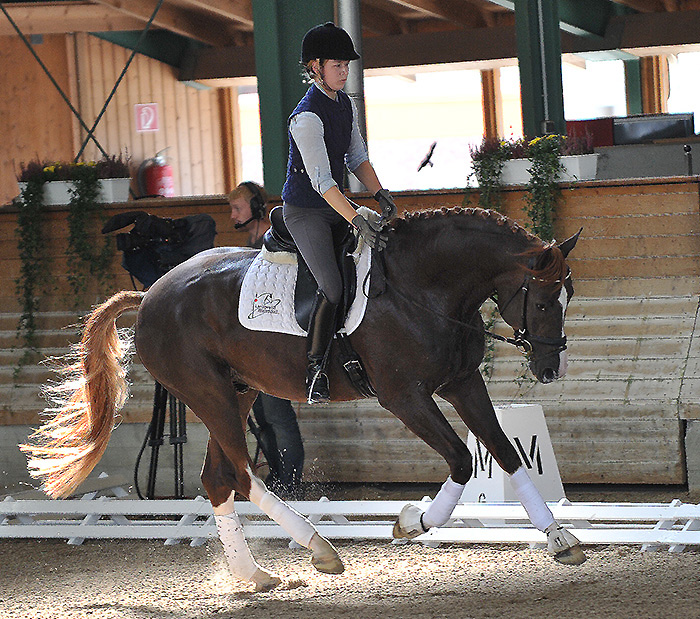
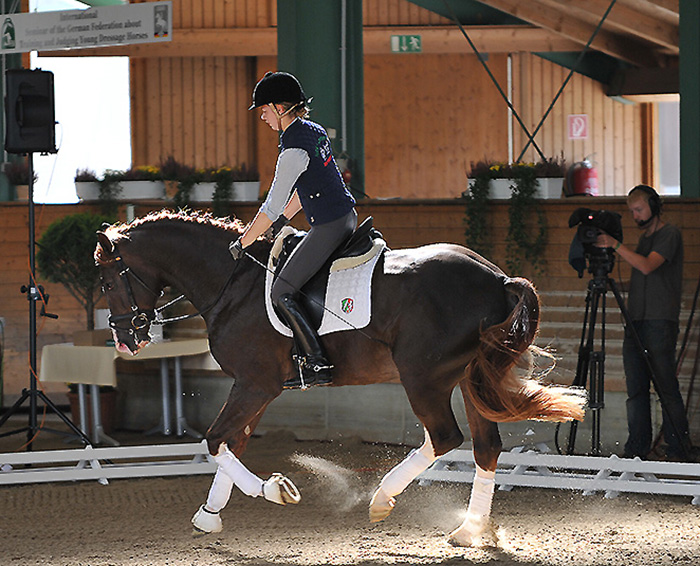
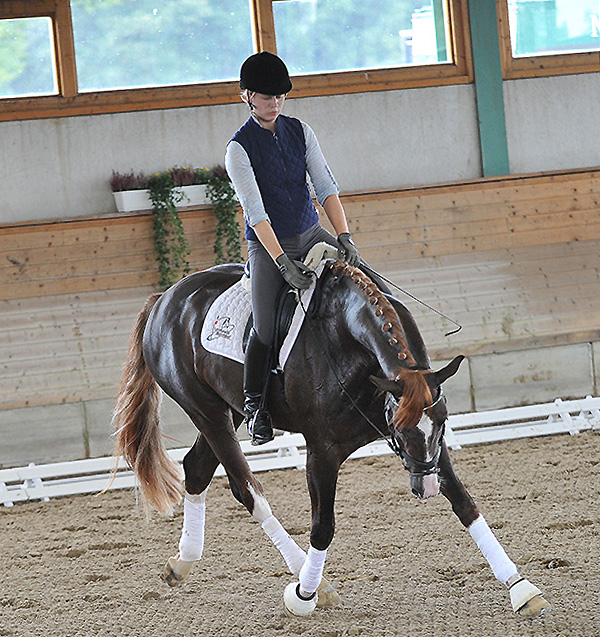
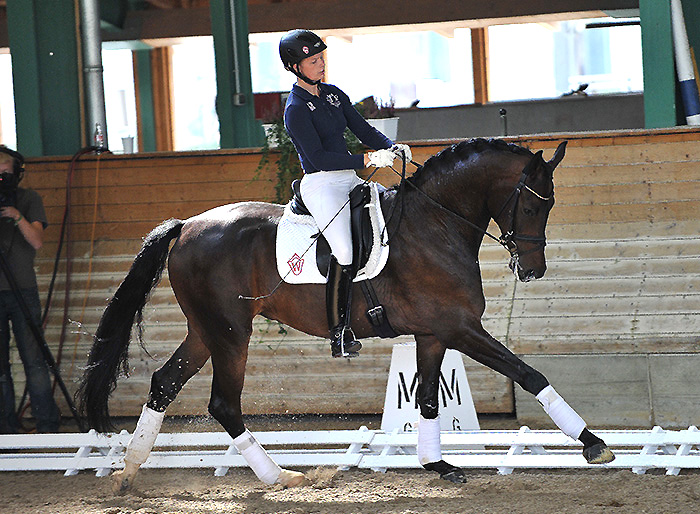
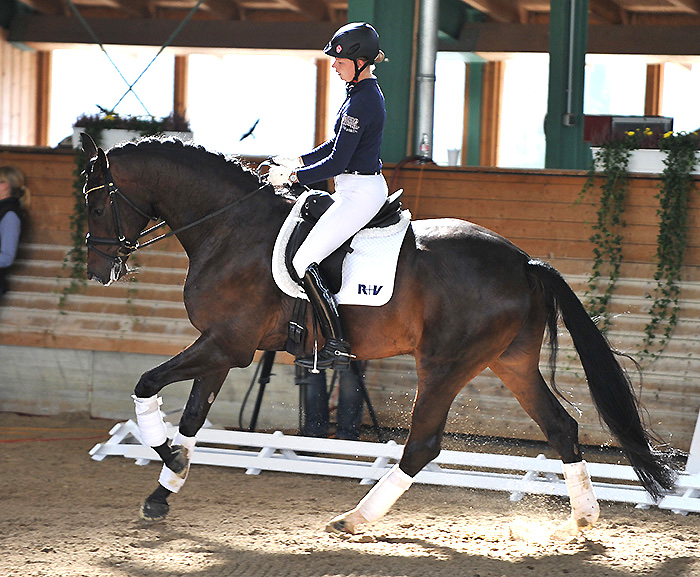
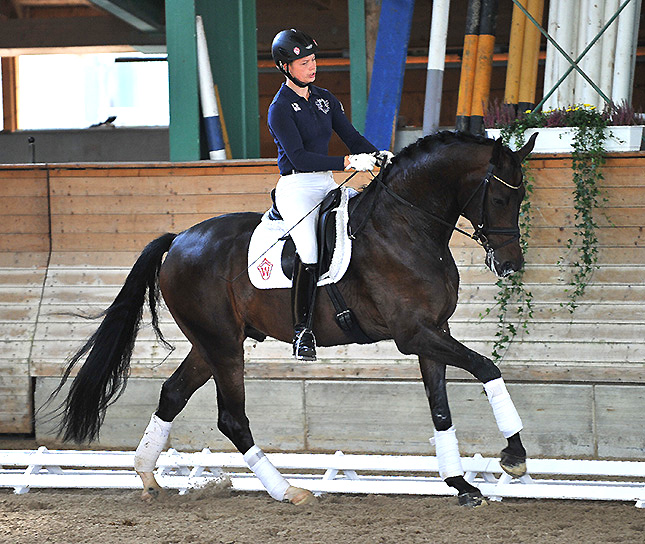
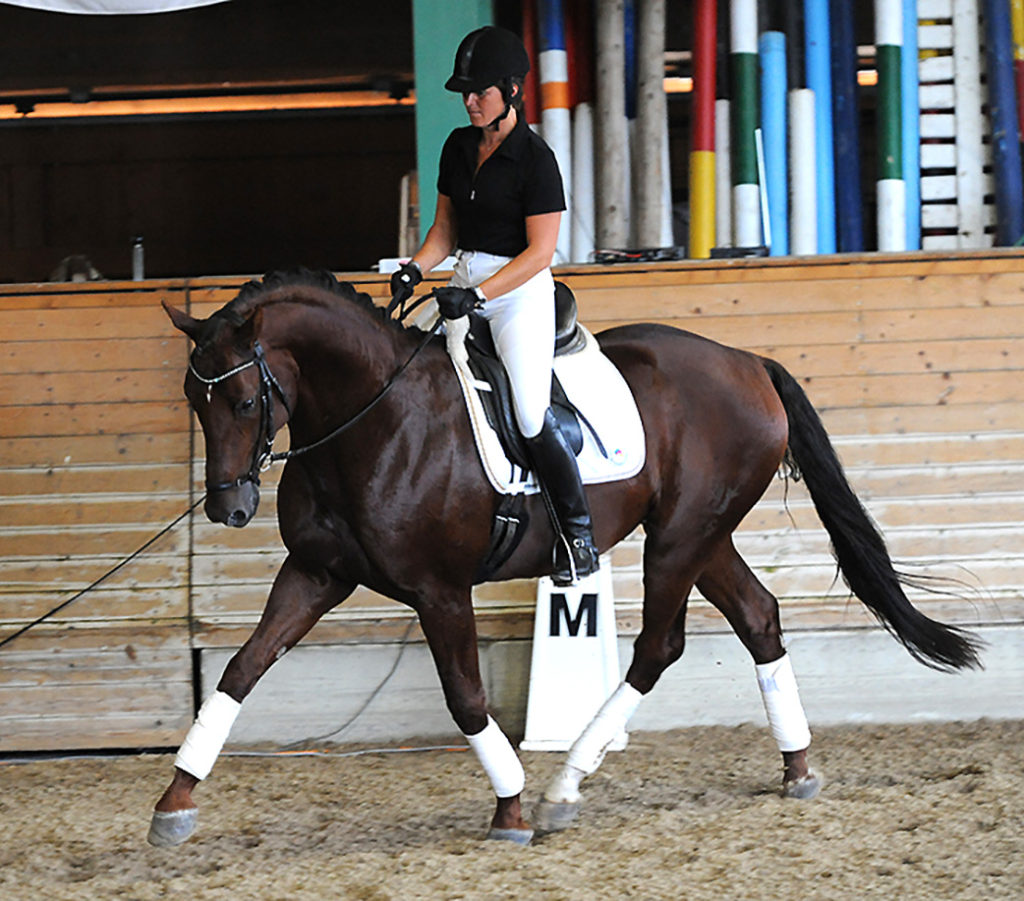
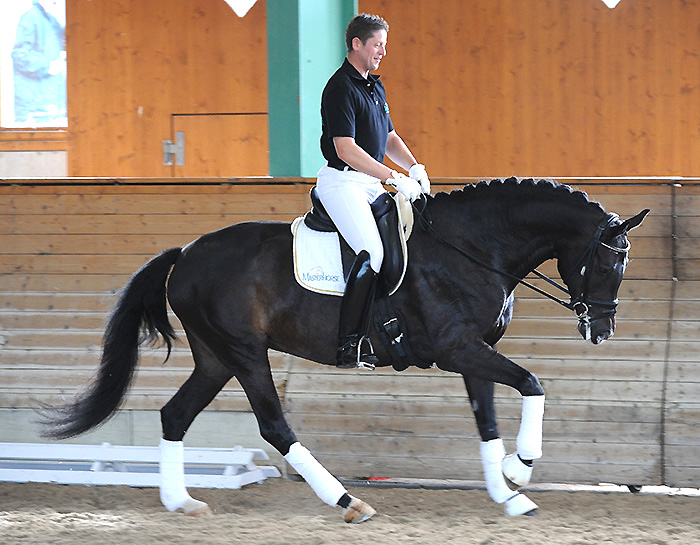
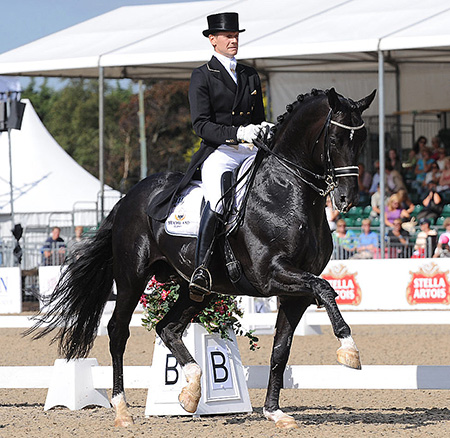
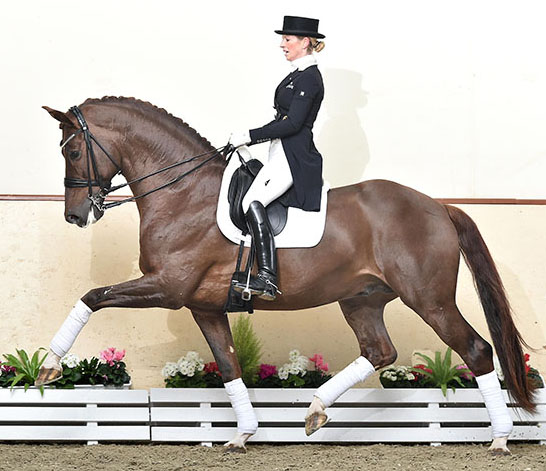
Balance before the vertical line is natural. Unbalanced behind the vertical is created by the dressed monkeys for whom the riding art and the associated balance is too difficult.
Really good words of the true dressage!
Clear and logical and it even gave me a feeling of the joy that comes with riding a horse that way.
BUT, it mostley is not at all that way you Karel de Lange and many others think, about the “monkeys”….
In fact it is absolutley impossible (!) to achieve the correct suppleness and the true losgelassenheit on a horse that by trimming have got the pedalbone horizontal or even worse negative angled to the ground!!! What also is shown on the bottom of the hoof by the frog beeing backwards angled to the ground, instead of being what is anathomic correct, exactly groundparallel.
This is so common today, I would say it relly is the reason for the problems today with the lack of true caryness and balance. And this misunderstanding by the farrieri so sadly ruins our art of dressage and the ortophedic health of the horses.
Maybe this old knowledge could make a change.
More information and rules of the classical way of trimming on fb HOV&Häst i Balans.
Best regards Birgitta, classic educated farrier.
.
Hello,
Christoph Hess is one of my favorite trainers, I learn so much from this trainer with my 4 years old Dutch Warmblood.
He trained me how to lower his head, how to bring him out, round and low with a swinging back and sure in front of my leg.
My 4 years old warmblood is on the right way Thanks to Christoph Hess.
Again, Thank you so much, please stay with us, please continue!
Christyna Wydenes
All these horses have flash nose bands…so horse can’t show a closed mouth or not. Pity…it would have been good to see their choice…given it is one of the stated assessments for suppleness.
Every single photograph shows an overbent horse with the highest point the third cervical vertebra. This is the very antithesis of the F.E.I. rules of dressage originally written by General Decarpentry of France and General Holzing-Berstedt of Germany.